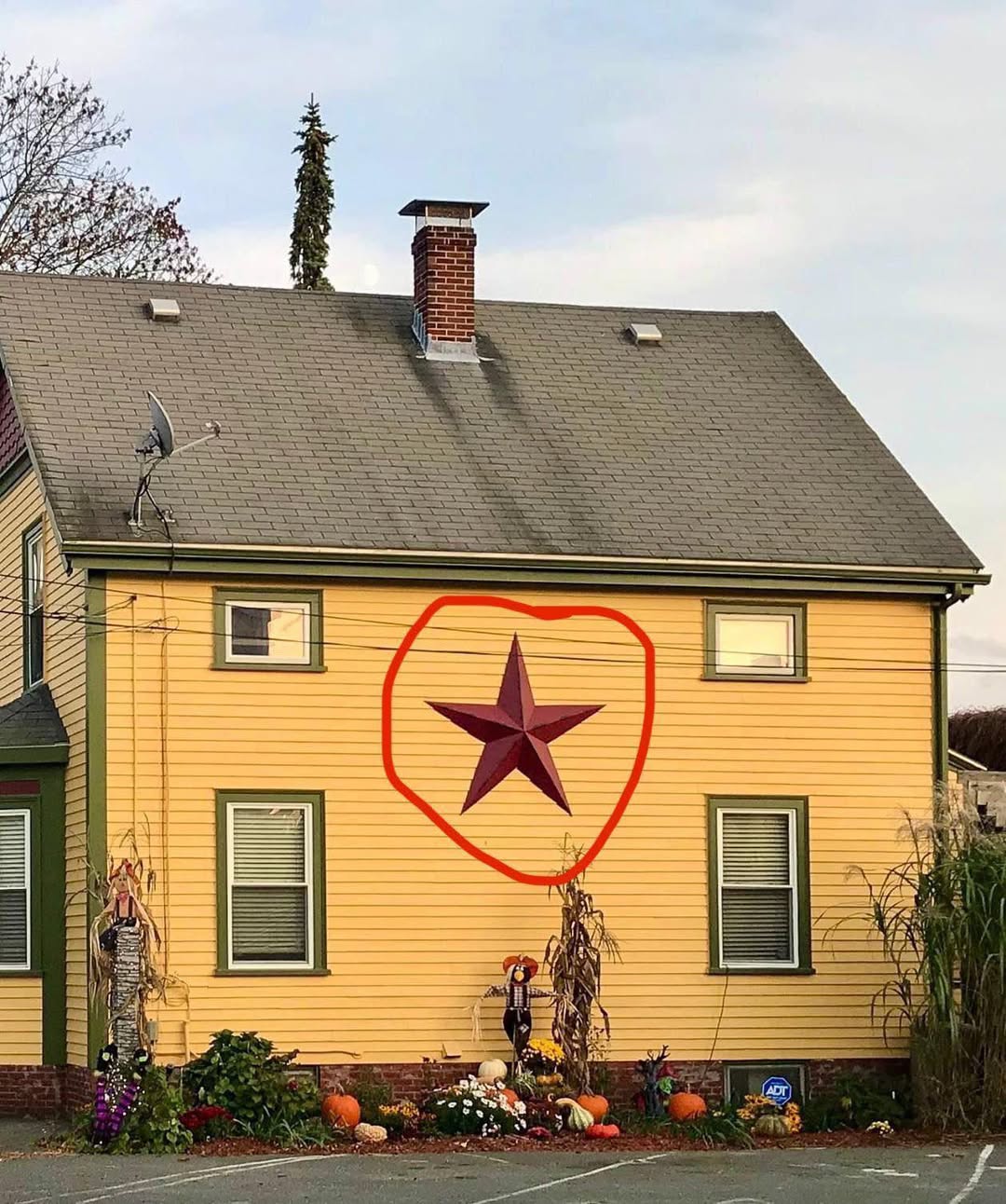The True Meaning Behind “Barn Stars”
If you’ve ever driven through rural areas in America, particularly in Pennsylvania Dutch country, you’ve probably noticed barn stars proudly displayed on the exteriors of barns. These stars, often made of metal or painted directly onto the barn, are more than just decorative pieces—they carry a deeper cultural and historical significance. While some barns may feature hex signs or quilt patterns instead, barn stars have a distinct symbolism rooted in tradition. Surprisingly, their purpose isn’t always what people assume.

Barn stars hold special importance for German-American farmers. Historically, these symbols were placed on barns as a form of protection against bad luck and as a way to ensure prosperity for the crops and animals. Each star can carry a different meaning depending on its color. For example, green stars symbolize fertility and abundant crops, while blue or black stars represent protection for the farmer, their family, and their possessions. Brown stars, on the other hand, symbolize friendship and community ties.
The tradition of barn stars dates back to the 1830s when they first began appearing on American barns. Their designs and meanings stem from European German folk art, brought over by immigrants who carried their traditions with them. Over time, barn stars evolved into unique symbols of cultural heritage in Pennsylvania Dutch communities.
Barn Stars vs. Hex Signs
While barn stars and hex signs are often confused for one another, they are not the same thing. According to Patrick Donmoyer, the director of the Pennsylvania German Cultural Heritage Center at Kutztown University, the two symbols have distinct origins and purposes. Barn stars were originally agricultural symbols, intended to reflect the farmer’s hopes and values, while hex signs came later and often carried superstitious or decorative meanings.
Hex signs became popular nearly a century after barn stars, thanks in part to artist Wallace Nutting. In 1924, Nutting visited Pennsylvania Dutch country and misinterpreted the meaning of the symbols he saw. He believed the stars and quilt patterns he observed on barns carried mystical powers and referred to them as “hex signs.” Nutting’s interpretation caught on, and by the 1950s, hex signs became a popular tourist attraction. However, the original purpose of barn stars was far more practical and cultural than mystical.
Barn Stars as Symbols of Protection
Donmoyer explains that many hex signs began appearing in places like marriage certificates and gravestones, where they symbolized blessings for newlyweds or peaceful passage into the afterlife. Barn stars, on the other hand, were originally agricultural symbols, representing hard work, heritage, and community values. The “power” often attributed to barn stars in modern interpretations is largely a result of evolving folklore rather than historical fact.
For German-American farmers, barn stars became a way to express their connection to their heritage and the land they cultivated. They weren’t originally seen as magical talismans, but rather as cultural symbols with deep roots in tradition.
Cultural Parallels Around the World
While barn stars are unique to certain American farming communities, similar protective symbols exist in many cultures worldwide. Across history, people have used visual symbols to ward off bad luck, protect their families, and ensure prosperity.
In Hinduism and Buddhism, the Om symbol is believed to purify the mind and body, providing a balance between peace and the chaos of life. It’s not just a sound used in meditation—it’s also a powerful visual symbol representing harmony.
In ancient Egypt, the Eye of Horus was thought to offer protection, health, and rejuvenation. This symbol appeared on tombs, jewelry, and temple walls, serving as a reminder of divine oversight and healing power.
The Hamsa Hand, common in Mediterranean and Middle Eastern cultures, is another protective symbol. It’s believed to ward off negative energy and bring blessings, strength, and prosperity to those who display it.
Native American and Norse Symbolism
Native American tribes have their own protective symbols, such as the turtle, which represents longevity, wisdom, and fertility. In many Indigenous cultures, the turtle is a sacred animal associated with the earth and stability.
In Norse mythology, the Helm of Awe symbol was used by warriors for protection in battle. It was believed to instill fear in enemies while offering courage and strength to the wearer.
A Shared Human Connection
Despite cultural and geographical differences, these symbols reveal a universal human desire for protection, security, and prosperity. Whether it’s a barn star on a wooden structure in rural America, an Om symbol in a meditation space, or an Eye of Horus on an ancient tomb, each carries the same fundamental purpose.
Barn stars, in particular, stand as a testament to the rich cultural traditions of German-American farmers. They remind us of the values of hard work, family, and community, while also preserving a slice of history that continues to inspire curiosity and admiration.
So, the next time you see a barn star on a countryside drive, remember—it’s not just a decoration. It’s a symbol of tradition, resilience, and a deep-rooted connection to the land. These stars serve as both a cultural marker and a silent tribute to the generations who built their lives around agriculture, heritage, and hope for a prosperous future.





